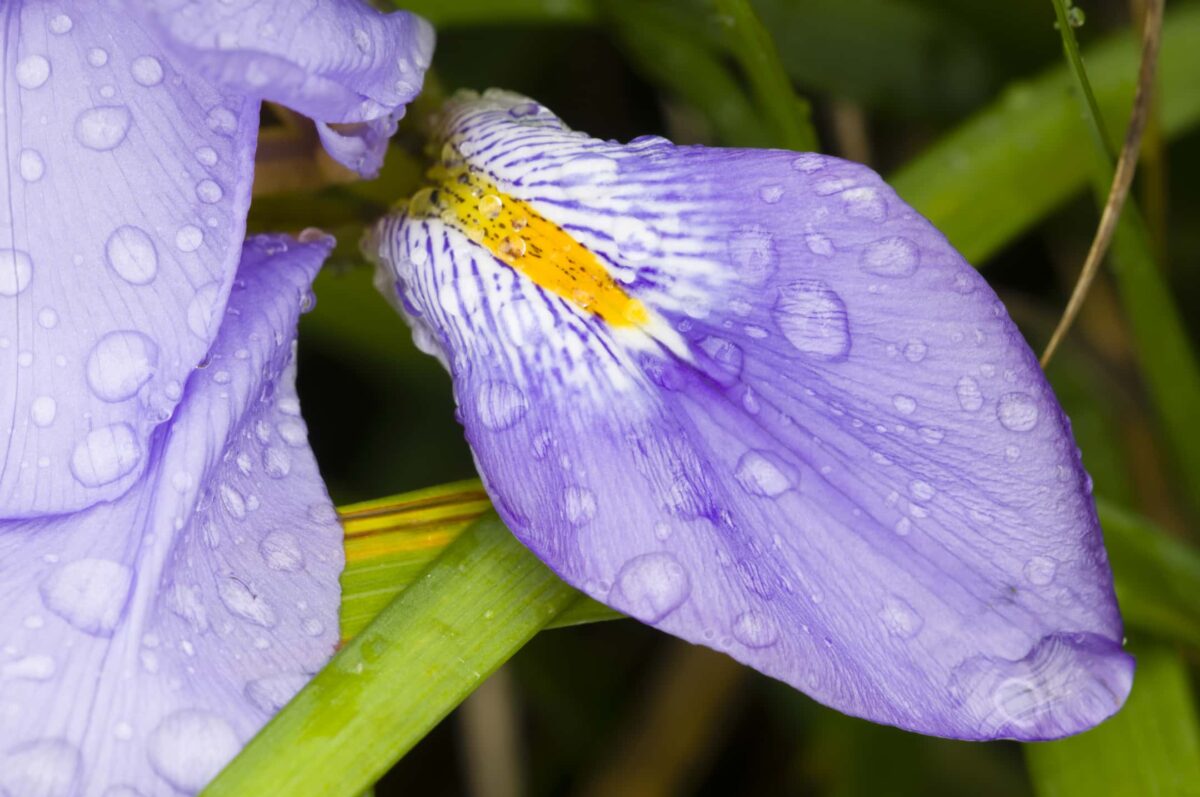The Beauty and Resilience of the Northern Blue Flag Iris

Posted on October 1, 2024 by Van Becelaere Greenhouse
The northern blue flag iris, scientifically known as iris versicolor, is a captivating flower that graces many gardens across the four states with its variegated shades of blues, whites, and yellows. Also simply referred to as the blue flag, it is a beardless variety of iris that grows predominantly across the eastern and central U.S. In today’s blog, we dig into this native North American plant’s features, ideal growing conditions, what threatens its survival to thrive, and how it can enhance your garden.
Garden Function and Aesthetic Appeal
The blue flag iris is a versatile plant that can serve various functions in a garden. Its sleek leaves stand 24 inches tall. Graceful stalks grow to 30 inches, where 3 to 5 flowers perch. These striking plants offer aesthetic appeal with elegant green foliage and whispy, delicate flowers.
Its height makes it an excellent choice for borders, water gardens, and established areas. When combined with other moisture-loving plants, such as ferns, astilbes, and hostas, it can create a lush, thriving garden space that will inspire and delight.
Prominent Features of the Northern Blue Flag Iris
The northern blue flag iris is an herbaceous perennial plant with striking bluish-purple flowers, often adorned with dark-purple veining and vibrant yellow sepals that help attract pollinators. The iris flowers typically bloom from late spring to early summer, from May to June, adding a splash of color to any garden landscape. The plant’s foliage consists of narrow, sword-like leaves that grow in a fan-like shape, providing an attractive backdrop even after the blooms fade.
One of the distinguishing features of the iris versicolor is its beardless quality. Unlike most other iris species, the blue flag lacks the fuzzy “beard” on its petals, giving it a sleek and elegant appearance. That singular characteristic makes it less prone to certain pests that target bearded irises.
Ideal Growing Conditions
As a resilient perennial, the blue flag iris thrives in a variety of environments, from marshy, wet swamplands to meadows in full to partial sunlight. Its adaptability makes it an excellent choice for home gardeners living in grow zones 3 through 9, offering the potential to replicate the perfect growing conditions for this iris to multiply.
These hardy flowers can withstand cold temperatures, making them suitable for gardens in various climates. However, providing sufficient water, especially during droughts, is vital to keeping the soil moist and wet for these creeping rhizomes.
Environmental Threats: Insects and Disease
Like all plants, the blue flag iris faces specific environmental threats. Common pests include iris borers, aphids, and thrips, which will cause significant damage if not managed promptly. Regular inspection and appropriate treatments, such as insecticidal soaps or natural predators, can help keep these pests at bay.
Like many plants, the iris is prone to a host of diseases, including various forms of rot, such as bacterial soft rot, crown rot, and rhizome rot. Providing good air circulation and taking every precaution not to water from above will help prevent fungal issues like blossom blight and leaf spot. Removing and disposing of any affected plant parts quickly will reduce the risk of the disease spreading and infecting other nearby iris.
Planting Flowers in the Fall
The native northern blue flag iris, with its striking appearance and remarkable resilience, is a fantastic option for home gardeners seeking to add a showy display with ecological value to their gardens. The enhancing aesthetic appeal of this flowering plant will provide a valuable habitat for local pollinators and wildlife. By understanding its growing conditions and potential threats, you can cultivate a thriving display of iris versicolor that will delight you and contribute to the local ecosystem for years to come.
Stop in at Van Becelaere Greenhouse in Pittsburg, Kansas, to start planning your spring flower garden this fall, or call ahead with questions at 620-231-1127.
